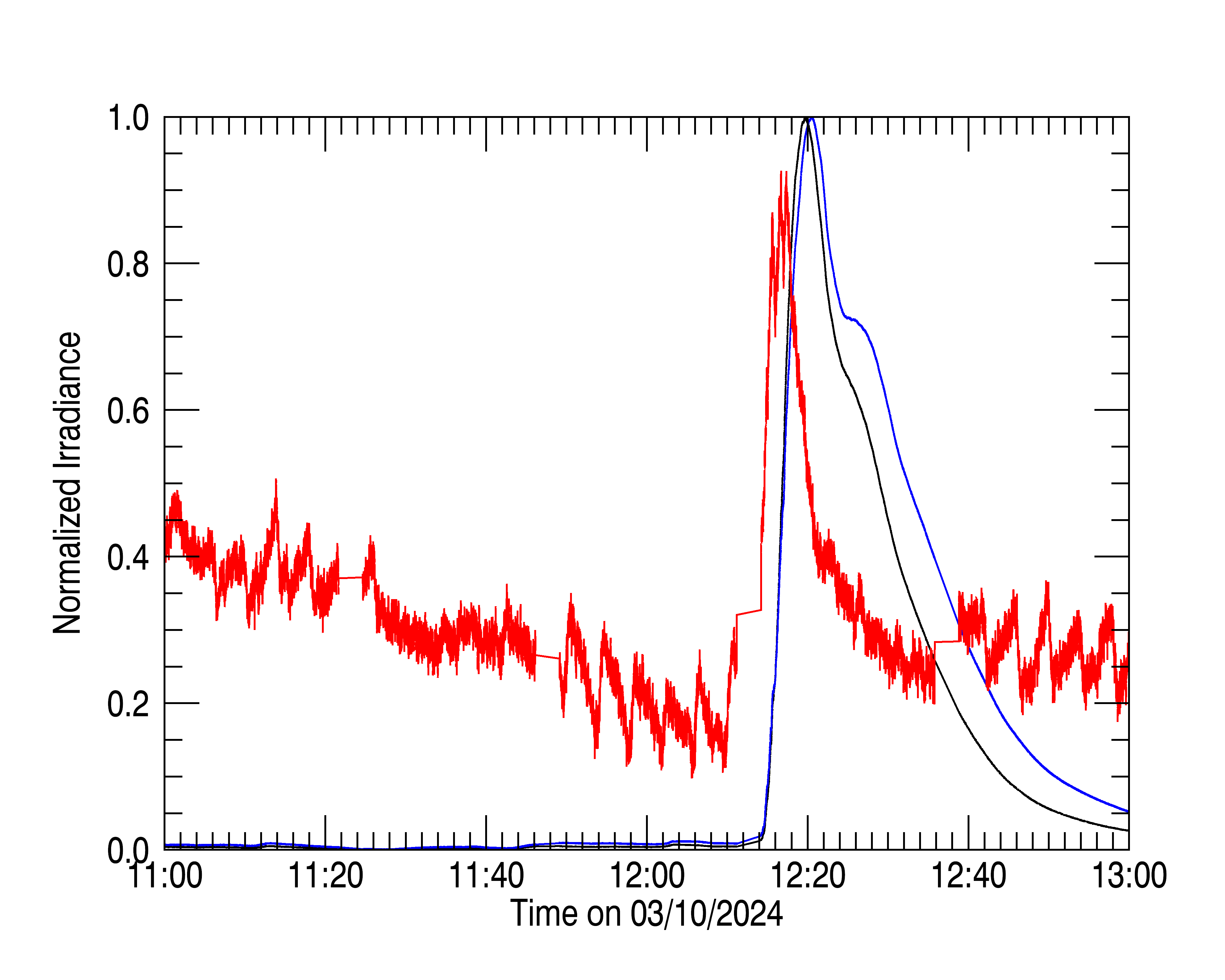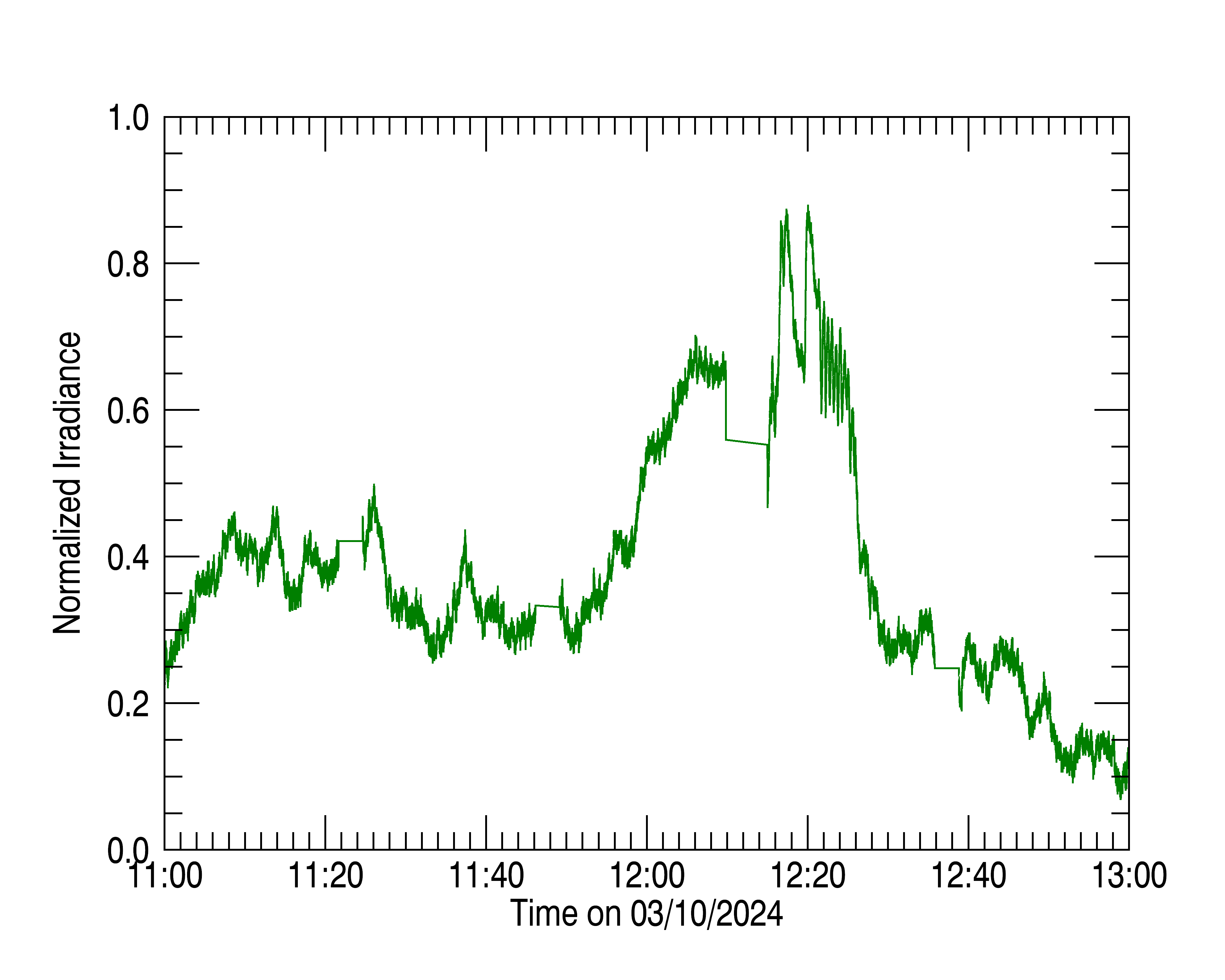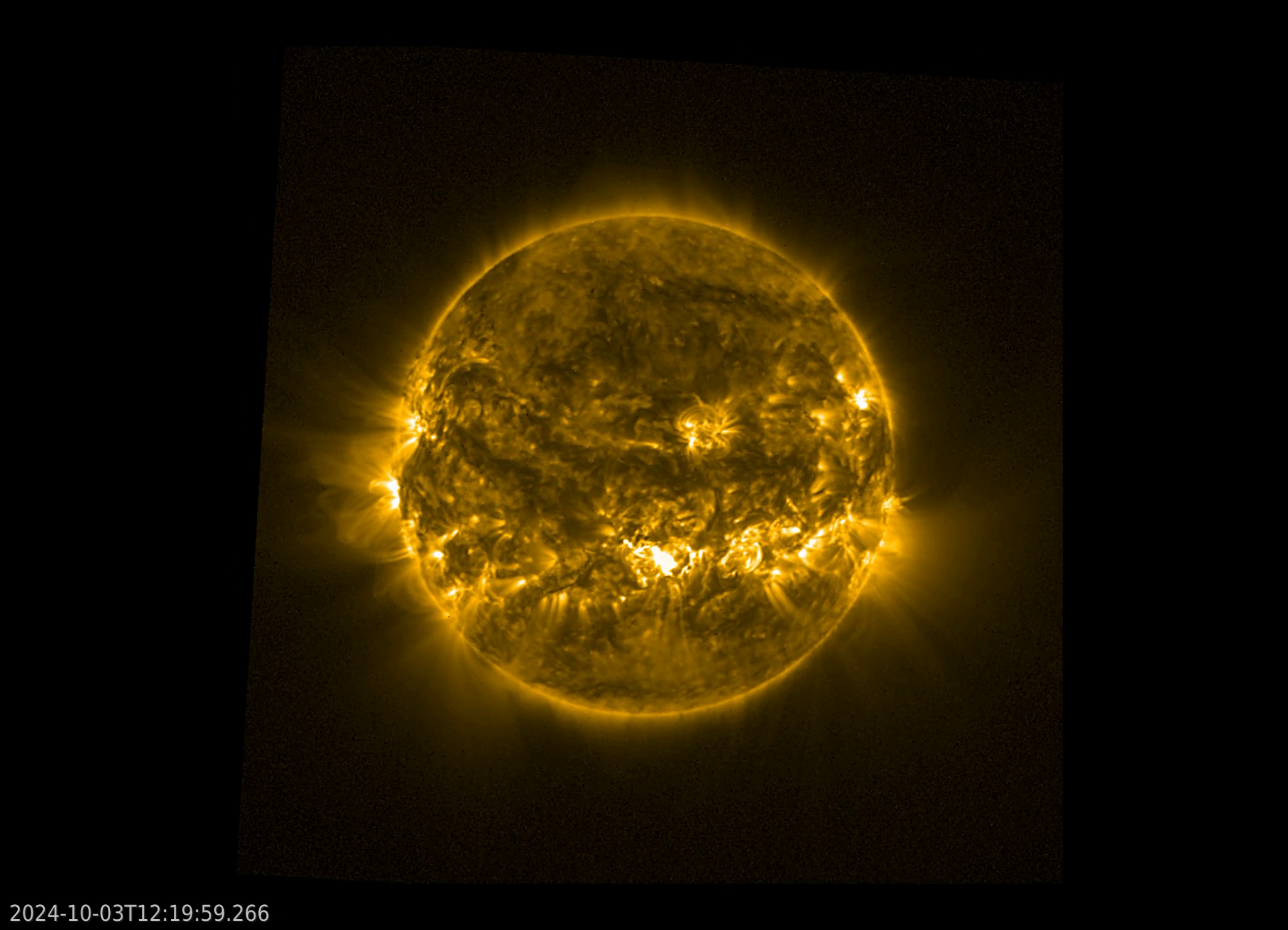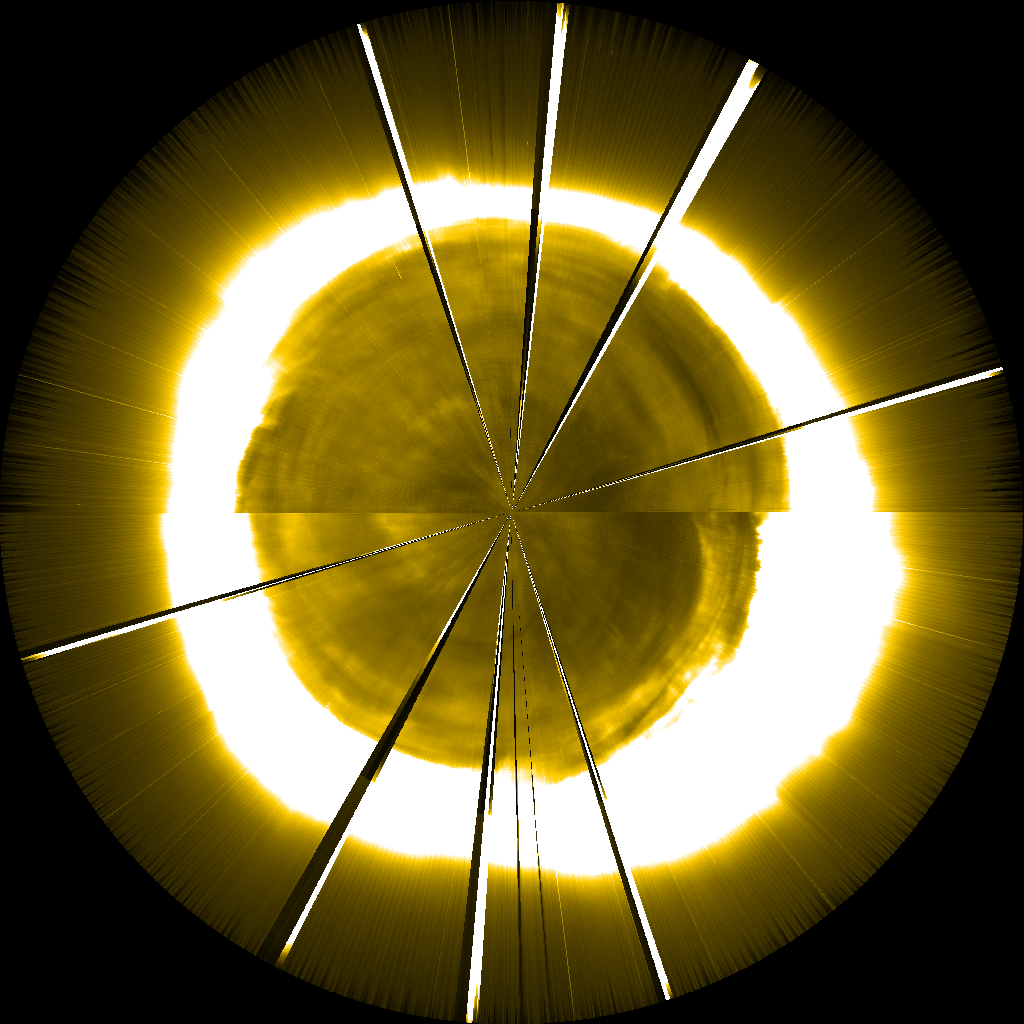Main menu
You are here
Exceptional detection of an X9.0 flare by PROBA2
On October 3, the Sun unleashed its most powerful eruption since 2017: a solar flare classified as X9.0 on the GOES scale, accompanied by a significant coronal mass ejection (CME). The flare originated in a solar region that had shown increasing activity for several hours (NOAA 13842). As a result, the event did not come as a surprise to the scientists working with PROBA2.
At the time of the flare, the PROBA2 team was conducting a special observation campaign. Both of the satellite’s instruments, SWAP and LYRA, successfully captured the event in detail. Notably, LYRA was operating with its backup unit—preserved for critical observations—which recorded the flare’s signature across at least three of its four channels, as shown in the figures below.


The flare signature observed in the four channels of LYRA: Lyman-alpha (red), Aluminum (blue), Zirconium (black), and Herzberg (green).
The detection of the flare in the Lyman-alpha channel (represented by the red curve) is especially significant, as only a few dozen similar detections have been made over the entire mission. Interestingly, the fourth channel (the Herzberg channel, shown in green) also registered an increase in signal. However, the data from this channel did not follow the typical pattern of a solar flare, prompting further investigation.
PROBA2 scientists will now analyze whether this signal was directly caused by the solar flare, another coinciding phenomenon, or more likely, a combination of both. If the flare is confirmed as the cause, this will mark only the second time a solar flare has been observed in the Herzberg channel—emphasizing the scientific importance of this event.
The SWAP observations of this remarkable flare can be seen by clicking on the image below. The movie is made with JHelioviewer.









